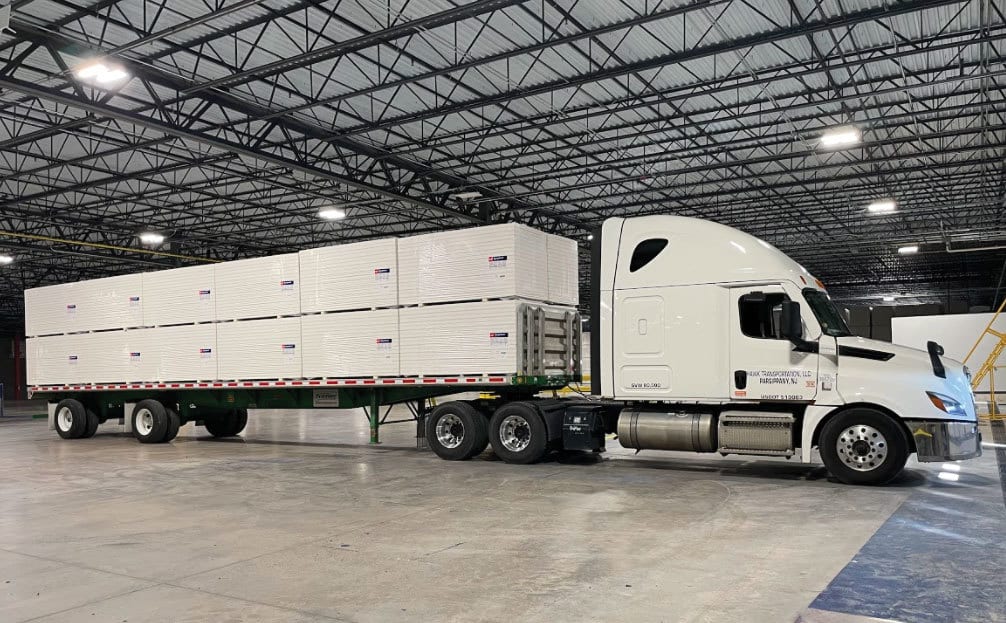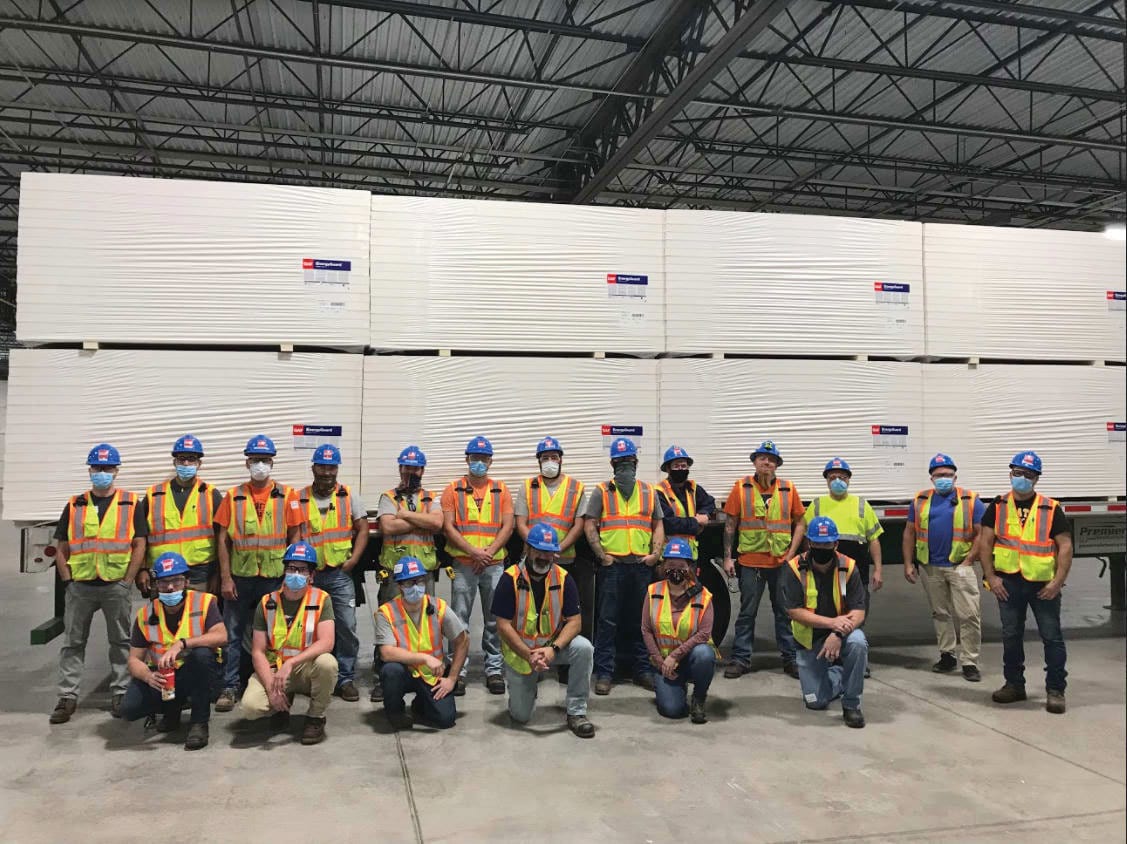Q&A
With John Altmeyer
The roofing industry appears ready to move forward after months of uncertainty. Will the optimism – and supplies – last?
BY ART AISNER
SCROLL
DOWN

John Altmeyer
Executive Chairman, GAF Commercial Roofing
John Altmeyer picked a heck of a time to get back into roofing. After retiring as CEO with nearly three decades of service to Carlisle Construction Materials in 2018, Altmeyer left the Tecta America Board of Directors to run GAF’s commercial roofing operations. It was early 2021, when vaccines were pushing back the physical and economic toll of the COVID-19 pandemic, and the supply-chain crisis was just beginning to reach the surface of concern.
He came into the job with a reputation as an industry leader known for driving growth and profitability by creating a strong, people-based culture. One year into his tenure — now having steered through multiple unexpected challenges — Altmeyer said he remains clearly focused on growing GAF’s commercial roofing business and taking it to new heights on rooftops around the continent. He recently sat down with RC to discuss where the roofing industry stands as the calendar flips to 2022, and what commercial roofers can expect from one of the leading brands in the residential roofing business.
RC: How would you describe your first year and what were some of your goals coming in? Have they changed?
JA: It’s been a quick year, but a long year at the same time.
They really haven’t (changed). I’ve taken a very long-term approach … I came to GAF to build a world-class company and create an industry-leading commercial roofing business underneath the umbrella of GAF, and that hasn’t changed. In some ways it’s become more challenging, and in other ways it’s accelerated some changes I think we can take advantage of.
RC: How different is the work environment now than when you last led a company?
JA: It’s been a much different environment to jump into than what I’ve been exposed to, which has required a bunch of different skill sets. I used to walk around a lot without a lot of meetings, and see people in their offices. Now the calendar’s completely full of meetings every day, and it is hard to drop-in on people and ask “What’s going on? How was this product launch?” And to have those follow-up conversations that are really, really helpful, because that allows someone at my level to really touch deep down into the organization.
You miss all of those types of contacts that help you really take in what’s happening day-to-day.

A shipment from GAF's fourth polyisocyanurate (polyiso) insulation manufacturing plant in New Columbia, Pa. Photo courtesy of GAF
RC: How did you adapt your management style, particularly when you had so many new people to meet?
JA: I really became adept at Zoom calls! But basically, you really have to be ready to take all the meetings people want to put on your calendar and talk through a lot of details. I want to know how people think, how they’re approaching decisions because I want to create an environment where decisions are pushed down to the level where the knowledge resides. Historically, we’ve been more of a top-heavy, command-and-control environment.
But to do that you’ve got to trust people and put them in situations where they can perform. Then you learn how they think, how they make decisions, and how you can make their decisions good ones.
RC: What hasn’t changed about the roofing business since you’ve been away?
JA: The beauty of this business and why I came back to it is that as much as society is digital now, people buy from people in this industry, and it’s really interesting. They really want to see GAF and want us to be a leader in this part of the industry. They really want to do business with GAF.
RC: Upon arrival, you said you felt the building blocks for success, and for GAF to be a leader in the market were there. Did the challenges of the past year reinforce that belief?
JA: I bring a competitive perception of GAF to this. The company emerged from the asphalt space into the single ply space with TPO, a high-quality product, and a well-trained sales force, but they had to be a price leader, if you will, to take market share from competitors to get into the game. Going forward, the reason I was excited to take this role is that the owners at Standard Industries and (Co-CEOs) David Millstone and David Winter are very keen at establishing the commercial side of the business.
They want to … really work hard at expanding our technical capabilities, our sales capabilities, our customer service experience capabilities and other areas where needed. The goal is to build a world-class organization that’s comparable to what they do in shingles.
“I want to know how people think, how they’re approaching decisions because I want to create an environment where decisions are pushed down to the level where the knowledge resides. Historically, we’ve been more of a top-heavy, command-and-control environment. But to do that you’ve got to trust people and put them in situations where they can perform.”
RC: How would you characterize the state of commercial roofing in North America heading into 2022?
JA: Two words: Challenging and frustrating. But that said, there is a great opportunity for GAF to outperform the competition in these tough times. Everyone wants to talk about supply-chain problems … and the mantra there is control what you can control, and do better than your competition. We have to be exceptionally creative in how we do things. Using muscles we didn’t even know we had in this type of environment, and that’s what we’re going to continue to do going forward. Over time, we’ll be a better manufacturer having gone through the COVID-19 challenges. We’re learning every day not only from what we see externally, but internally what we can expect of ourselves.
RC: For roofing contractors, 2021 was dominated by supply shortages and volatile pricing. How did GAF’s commercial business respond?
JA: We pride ourselves on being open, direct and early with bad news. No one ever wants to deliver bad news and you may want to sugar coat, but the contractor can’t count on that. Long-term it creates a lot of issues that make it very difficult to adapt to a challenging supply-chain situation. If we have to, we want to deliver that bad news early and give them the information as best we can. It’s not always easy and there are moving parts because what I tell you today can be different next week, which is out of our control.
It’s a really challenging time for all of us manufacturers in the middle of this. In commercial roofing, we’re about chemicals and logistics. We ship hundreds of thousands of flatbeds full of roofing materials. We’re in the two most impacted sectors of the supply chain problems – chemicals and transportation. So you can imagine it’s really made our lives challenging at times.
RC: What was learned from a manufacturing standpoint and how will this impact the roofing market going forward?
JA: We as manufacturers created an expectation from contractors that if they placed an order, they’d get a truck, and it was very, very reliable because we had inventory and enough trucking. Those days are over for right now. We also used to spend a lot of time and energy trying to forecast this business, and with weather and subcontractors and delays it’s a very difficult industry to try and forecast. To understand how much money to depend on. So I’ve always said we’ve got to be more flexible than anyone else because we can’t forecast right now.
RC: Did any other specific strategies develop from this experience?
JA: We need to be able to change our lines up quicker and we need more sprint capacity; we need to be more creative about how we handle customer changes; and do it better than the competition to get that edge with the customer base.
We’re learning to be a lot more flexible about how we look at incoming orders, how to drive more capacity through our plants, how we can get truckloads of your product to the roof … all these muscles that we’re flexing, and learning the hard way in some cases. I think it will produce a stronger industry in the end and make GAF a stronger supplier moving forward.
“We’re learning to be a lot more flexible about how we look at incoming orders, how to drive more capacity through our plants, how we can get truckloads of your product to the roof … all these muscles that we’re flexing, and learning the hard way in some cases. I think it will produce a stronger industry in the end and make GAF a stronger supplier moving forward.”
RC: Who is GAF’s ideal commercial contractor customer? What’s your message to those that aren’t using GAF?
JA: We want customers who see us as their go-to choice, whether they’re a contractor or distributor. To work on a big box job and be able to work on price, we can get there; to work on a complex job like an airport or a hospital, we can get you there; if you have to consult with specifiers, we can help you there. So we have to be able to service a lot of needs because the contractor base, in many cases, does all those types of jobs as well.
RC: What’s your message to those that aren’t using GAF?
JA: It’s really hard to build a differentiated product strategy in this marketplace. There are little things here and there, but for the most part, TPO is TPO and ISO is ISO. You differentiate based on everything else around the product – the customer experience from ordering to your technical support to how it gets priced; to how it gets shipped; and the communication you have in between. Most importantly, through that whole chain, is the last mile – that added value that GAF can provide through that local relationship.
That’s the difference, and that’s what we’re trying to create: that local relationship that transcends whether it’s a COVID-19 environment, or an economic downturn or upturn. We remain to be their go-to manufacturer.
RC: What can contractors do to help manufacturers get through this process?
JA: The biggest thing they can do is keep communicating with us. And the communication goes two ways. If a contractor has orders for 10 jobs, we’ll talk about prioritizing the most important ones and where to put our efforts to understand what their key jobs are. Contractors are also finally realizing that they’ve got to have price escalators in their pricing. It was surprising to me early on to see contractors that run great businesses were reluctant to go back to their customers with price increases, even though they know what’s going on with inflation. I think we’ve helped contractors work through that and have been happy to get on the phone with roofing contractors and their customers to just explain why price increases are happening. Those conversations typically go pretty well.
RC: Does any of this impact research and development for new roofing products, and can you even focus on that in this environment?
JA: We don’t want to launch a product and not be able to make it. That being said, we’re still working on things and bringing in a lot of talent going forward at GAF, many of whom will be focused on future products. At the same time, R&D is working feverishly on ways to drop in other chemicals into the process to replace the ones we’re short on.

GAF is looking for a big year in commercial roofing in 2022. Here's GAF's New Columbia, Pa., team with an ISO shipment.
RC: Does there appear to be any relief in sight?
JA: The challenge you have is that people think because the calendar changed, the situation or market has changed. There’s a psychological aspect to that, but I just don’t think the calendar rolling over is going to change anything, unfortunately. We’re struggling getting certain chemicals, and with the COVID-19 variants coming on, and inflation being rampant, I just don’t see things lightening up at the end of the tunnel.
Right now we’re in a situation where demand exceeds supply in all levels of the chain. Until we can flip that around and get supply to exceed demand, we’re not going to see this alleviate. The backlogs and activity we’re seeing in commercial roofing is very strong.
RC: What are you excited about for 2022 and beyond?
JA: For the first time ever we did a three-day retreat and laid out a five-year plan for the business with internal targets. We’re going to be very aggressive with the things we want to do, and we’re looking at significant expansion of our manufacturing capabilities over the next five years; we’re looking at significant innovation in terms of existing products, and adding new products; we’re looking hard at really emphasizing that customer experience. Really focusing in on a customer-centric organization. One that listens to the customer, one that responds to the customer, as opposed to getting caught up in the internal machinations which can slow operations down.
Art Aisner is editor of Roofing Contractor. Reach him at 248-244-6497 or aisnera@bnpmedia.com.